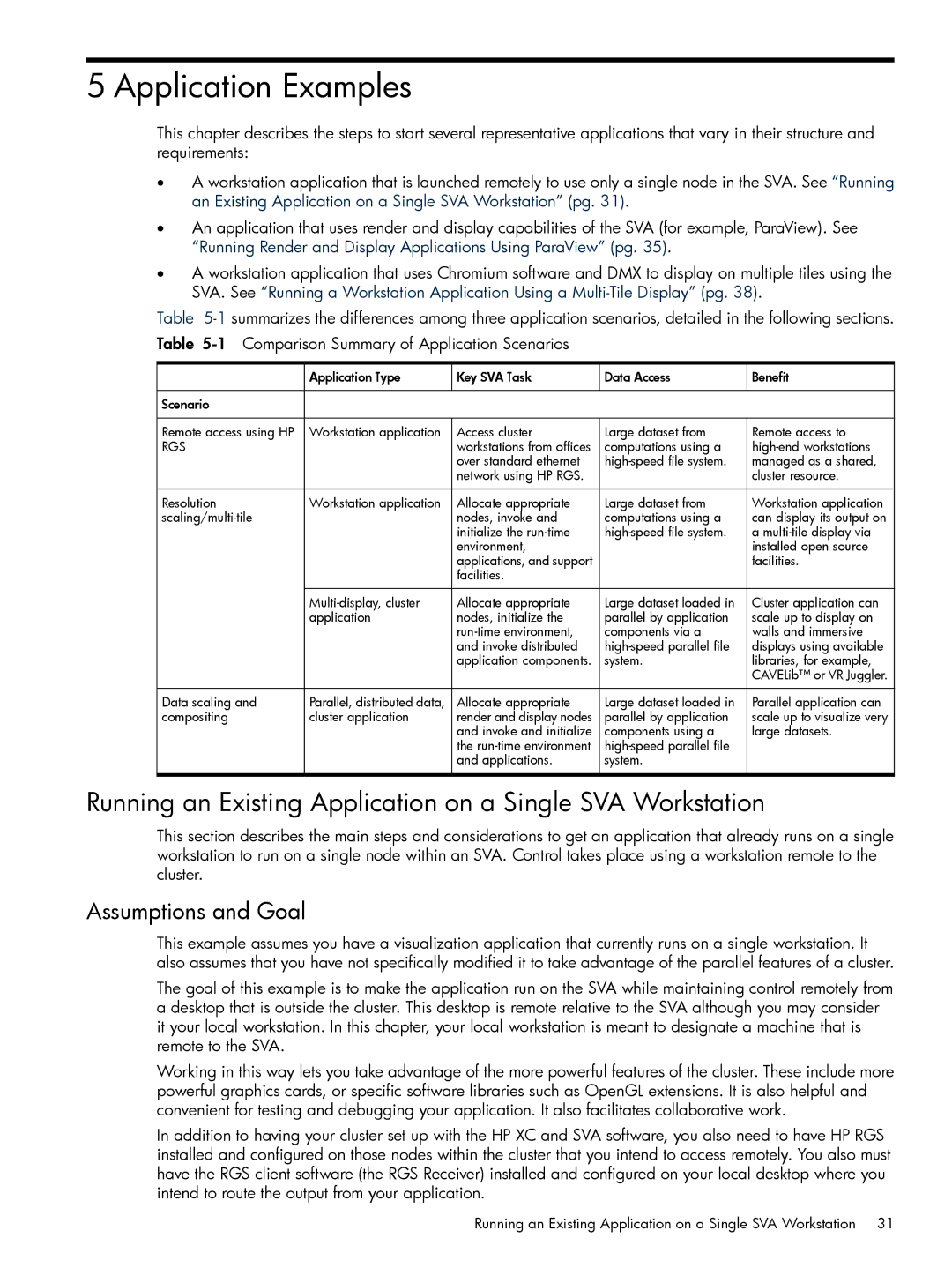
5 Application Examples
This chapter describes the steps to start several representative applications that vary in their structure and requirements:
•A workstation application that is launched remotely to use only a single node in the SVA. See “Running an Existing Application on a Single SVA Workstation” (pg. 31).
•An application that uses render and display capabilities of the SVA (for example, ParaView). See “Running Render and Display Applications Using ParaView” (pg. 35).
•A workstation application that uses Chromium software and DMX to display on multiple tiles using the SVA. See “Running a Workstation Application Using a
Table
Table
| Application Type | Key SVA Task | Data Access |
Scenario |
|
|
|
Remote access using HP | Workstation application | Access cluster | Large dataset from |
RGS |
| workstations from offices | computations using a |
|
| over standard ethernet | |
|
| network using HP RGS. |
|
Resolution | Workstation application | Allocate appropriate | Large dataset from |
| nodes, invoke and | computations using a | |
|
| initialize the | |
|
| environment, |
|
|
| applications, and support |
|
|
| facilities. |
|
| Allocate appropriate | Large dataset loaded in | |
| application | nodes, initialize the | parallel by application |
|
| components via a | |
|
| and invoke distributed | |
|
| application components. | system. |
Data scaling and | Parallel, distributed data, | Allocate appropriate | Large dataset loaded in |
compositing | cluster application | render and display nodes | parallel by application |
|
| and invoke and initialize | components using a |
|
| the | |
|
| and applications. | system. |
![]() Benefit
Benefit
Remote access to
Workstation application can display its output on
a
Cluster application can scale up to display on walls and immersive displays using available libraries, for example, CAVELib™ or VR Juggler.
Parallel application can scale up to visualize very large datasets.
Running an Existing Application on a Single SVA Workstation
This section describes the main steps and considerations to get an application that already runs on a single workstation to run on a single node within an SVA. Control takes place using a workstation remote to the cluster.
Assumptions and Goal
This example assumes you have a visualization application that currently runs on a single workstation. It also assumes that you have not specifically modified it to take advantage of the parallel features of a cluster.
The goal of this example is to make the application run on the SVA while maintaining control remotely from a desktop that is outside the cluster. This desktop is remote relative to the SVA although you may consider it your local workstation. In this chapter, your local workstation is meant to designate a machine that is remote to the SVA.
Working in this way lets you take advantage of the more powerful features of the cluster. These include more powerful graphics cards, or specific software libraries such as OpenGL extensions. It is also helpful and convenient for testing and debugging your application. It also facilitates collaborative work.
In addition to having your cluster set up with the HP XC and SVA software, you also need to have HP RGS installed and configured on those nodes within the cluster that you intend to access remotely. You also must have the RGS client software (the RGS Receiver) installed and configured on your local desktop where you intend to route the output from your application.
Running an Existing Application on a Single SVA Workstation 31
